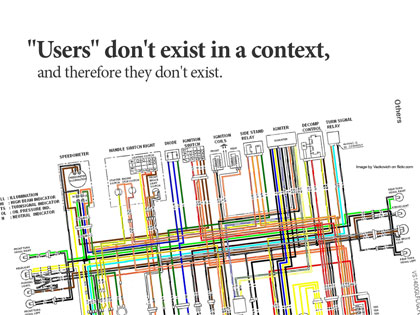People visiting your site come there in effect of an activity
. They have a goal and the web page is a tool in order to achieve that goal
. In that effect there are no “users”, because their only goal is to use your page. Not in order to solve a problem or achieve a goal, but just to push the buttons and read the texts
difficult Not difficultpatients with mild to moderate ED. Adverse reactions What is sildenafil?.
.
“Users” don’t exist in a context, and therefore they don’t exist.
If I want to go to the movies, I visit the web page in order to find a movie or buy a ticket, my main goal is to watch a movie to pass time, have a romantic evening or just a boys night out
.
So where does the “user” come into the picture? And why does a large part of the web-industry keep referring to these non-existing visitors? I have no clue, maybe it’s just a lack of interest in investing in a better vocabulary?
Because there are solutions and they are right in front of our noses:
Participant: Any human participates with the world around him/her, this includes brands, people and web pages. They are a part of many eco-systems with which they interact and react to. A participant is also the main communicator of your brand.
Meman: A meman is a self-centered human. As Seth Godin says it: Humans are self-centered and if you want their attention you must be sure they see a personal gain or value by participating
.
So, there are no “users”, there are roles, participants and memans.

